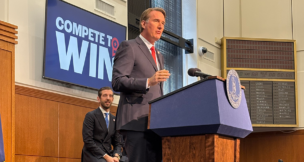200 townhomes planned for Chesterfield County
Nearly seven acres of land in western Chesterfield County has been sold for $3.8 million in preparation for 200 townhouses to be built in the Westchester Commons area. Westchester Towns Development Co. purchased 6.57 acres of land at 1400 WC Commons Way, from Zaremba Metropolitan Midlothian LLC, Cushman & Wakefield | Thalhimer announced May 16. […]
‘Novel’ project will add 275 apartments to Scott’s Addition
Crescent Communities, ParkProperty Capital and Thalhimer Realty Partners are developing a 275-unit apartment community in a joint venture on the border of Richmond‘s fast-growing Scott’s Addition neighborhood and the city’s planned Diamond District. Dubbed “Novel Scott’s Addition,” the community will be located at the former Wesco Distribution Site at 2902 North[...]
78-unit apartment complex planned for Petersburg
A 78-unit apartment complex will be developed on a four-acre piece of land recently purchased in Petersburg, Colliers announced Thursday. Thalhimer Realty Partners purchased the High Street Land Development from Monroe Properties for $875,000, according to Colliers. Thalhimer will develop the apartments across two phases: With construction starting in 2023, the first phase will feature […]
Goodwin House acquires Hermitage Northern Va.
Not-for-profit senior living and health care organization Goodwin House Inc. has acquired Hermitage Northern Virginia, a senior living community in Alexandria, from Pinnacle Living. The financial terms were not disclosed. Hermitage has 100 residents and more than 100 employees and offers independent living, assisted living and long-term care. It has two residential buildings and a […]
Cortland to invest $1B in Arlington apartments
Cortland, an Atlanta-based multifamily real estate investment, development and management company, will invest $1 billion in four Arlington apartment communities totaling more than 1,500 units, marking the company’s reentry into the metro Washington, D.C., market. The four properties include the 331-unit Aubrey apartment building — rebranded by Cortland as Cortland Rosslyn — and the 534-[...]
Chesapeake office park sells for $5.7M
Poplar Hill Medical Center, a four-building medical office park in Chesapeake, has sold for $5.7 million, Divaris Real Estate Inc. announced Thursday. Texas-based real estate fund manager Woodside purchased the park in December 2020 and sold it to Charlottesville-based Seminole Trail Properties in a deal that closed May 6. When Woodside bought the property, it […]
Publix to open first South Hampton Roads store
Publix Super Markets Inc. will open its first grocery store in South Hampton Roads in Suffolk, the company announced Thursday. The 45,000-square-foot Publix will be on the southwest corner of Godwin Boulevard and Kings Fork Road, according to a news release. Publix has not given a timeline for the store’s opening. It will hire about […]
Clark Construction to expand in NoVa
Bethesda, Maryland-based Clark Construction Group LLC, the general contractor for several phases of Amazon.com Inc.’s HQ2, announced plans Tuesday to expand the company’s footprint in the mid-Atlantic region, including building a 128,000-square-foot office in McLean. The office will be at 7900 Westpark Drive in Fairfax County, and will “provide a modern and collaborative hub for [...]
Cobalt Real Estate Solutions names new CIO
Virginia Beach-based investment fund Cobalt Real Estate Solutions has named Tim McCann as its chief investment officer, the company announced Tuesday. Cobalt, an affiliate of Divaris Real Estate Inc., is seeking to raise $50 million in equity to add $150 million in properties to its portfolio. and McCann will seek investment opportunities, develop investment strategy […]
Capital Square names VP of marketing
Capital Square has promoted Sydney Hockaday to vice president of marketing, the Henrico County-based real estate investment firm announced May 9. Hockaday joined Capital Square in 2018 as the firm’s marketing coordinator and has been promoted three times, first to marketing manager in 2019, then to assistant vice president of marketing in 2021 and most […]
Two Richmond properties change hands
Two properties in Richmond — an office building in Scott’s Addition and an apartment building in The Fan — have been sold, brokerage firm Marcus & Millichap announced Wednesday. An 11,130-square-foot building in Scott’s Addition at 3412 W. Leigh St. has sold for $1.8 million, according to Marcus & Millichap. According to city property records, […]
Salem apartment complex sells for $12M
A 132-unit apartment complex in Salem has sold for $12 million, Cushman & Wakefield | Thalhimer announced Wednesday. Viewnorth Apartments LLC purchased the property from Northview Apartments LLC on April 29. The buyer plans to upgrade the community, according to a news release about the transaction. The apartments are located at 411 to 515 Yorkshire […]





















